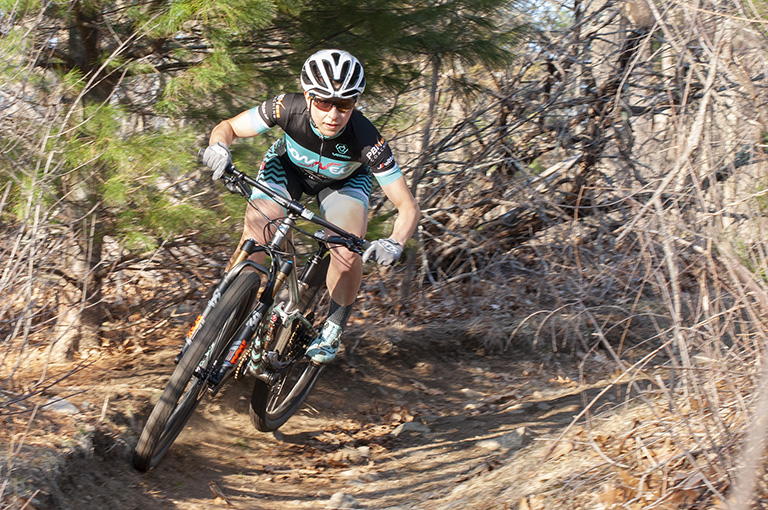

U.S. Built Custom Bicycles in Titanium and Titanium-Carbon Mix
Seven offers a wide range of suspesnion bikes. From 100 mm short travel superlight race machines to some contemporary trail bikes. One of the ways we're able to offer this range of models and ride types is due to our experience and approach to our newest suspension system we call the Balance Control System.
img-fluidSeven's Balance Control System suspension project takes everything we've learned in our 20-plus years and applies it in some new ways. Seven's BCS platform incorporates that proven, classic, workhorse four-bar linkage system with our ability to customize and tailor bikes in unique ways.
The result isn't one bike, but a platform for creating the perfect bike for your style of riding and personal preferences.
Generally, our first concern is the Instant Center of Rotation, also sometimes called the virtual pivot point when using a four-bar linkage. Where you place the IC affects anti-squat and brake jack. Essentially, that placement should keep the brake from compressing the shock and at the same time, limit the energy lost to suspension as the rider pedals. This is about creating a stable platform for the rider within a system under dynamic stress.
Seven has learned a lot over the last twenty years, working on three generations of suspension bikes. This fourth generation platform – the Balance Control System – is, by far, the most tuneable and customizable yet.
We spent a lot of time working through what we call the virtual pivot track of our suspension bike platform, basically the moving line of the rear wheel's pivot center. That moving line (VPT) is more useful than simple Instant Center, because the term "instant" simply means that we're describing one specific point along the virtual pivot track throughout the bike's travel. There are infinite instant centers as the suspension is engaged.
The rear wheel's center line of movement or VPT is one of the most important elements of a contemporary suspension bike. There's a pretty well-regarded range of IC placements that result in good suspension characteristics, but the ideal vector path varies depending on the bike's purpose, suspension travel, gearing, and more. Typically, IC and the resulting VPT are determined by a series of design compromises that should result in a stable, balanced ride.

We have five basic ways to control each custom bike's virtual pivot track (VPT). Some are obvious and common. Some are unusual. As with so many aspects of suspension design, the important factors are all interrelated and tricky to isolate. Altering one affects the others.

Seven's virtual pivot track and instant centers on the Mobius SL with 120 mm travel front and rear, 29" wheels, and popular geometry for a medium sized frameset.
Probably even more important than the pivot location method is Seven's core customization. Forget about custom in terms of fit and tubeset tailoring – of course, we offer those with our suspension bikes. With our suspension series, we're also talking about the rider's center of gravity, tire contact patch location (both front and rear), gear ratios, suspension travel, and more.
Seven's customization process for suspension design is simple and easy for the rider to participate in. Certain characteristics Seven defines; certain performance characteristics the rider gets to define. Don't worry. You define the stuff you probably want to anyway: preferred wheel size, gearing, ride style, some level of front and rear shock travel, and more.
Seven defines the virtual pivot track, the rider's center of mass, the squat and anti-squat characteristics, brake force management, and suspension travel progressiveness among other things. Together we create a bike that rides like no other, and we argue that, by definition, rides better because it's designed specifically for you.
Individually, no one factor above makes a massive difference to the suspension character of the bike. That's why stock bikes can get away with being non-optimal for a given rider. But, stack all of these together and you get a finely-tuned, optimized bike that will make a difference on the trail. That's what makes BCS, and the Seven bikes built around it, something really unique and not previouslly offered in the market.